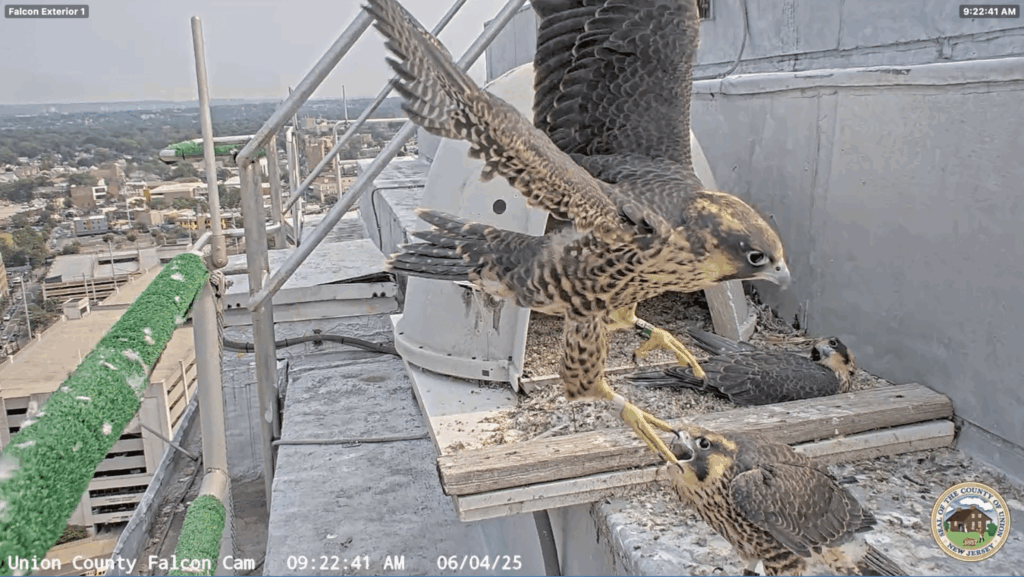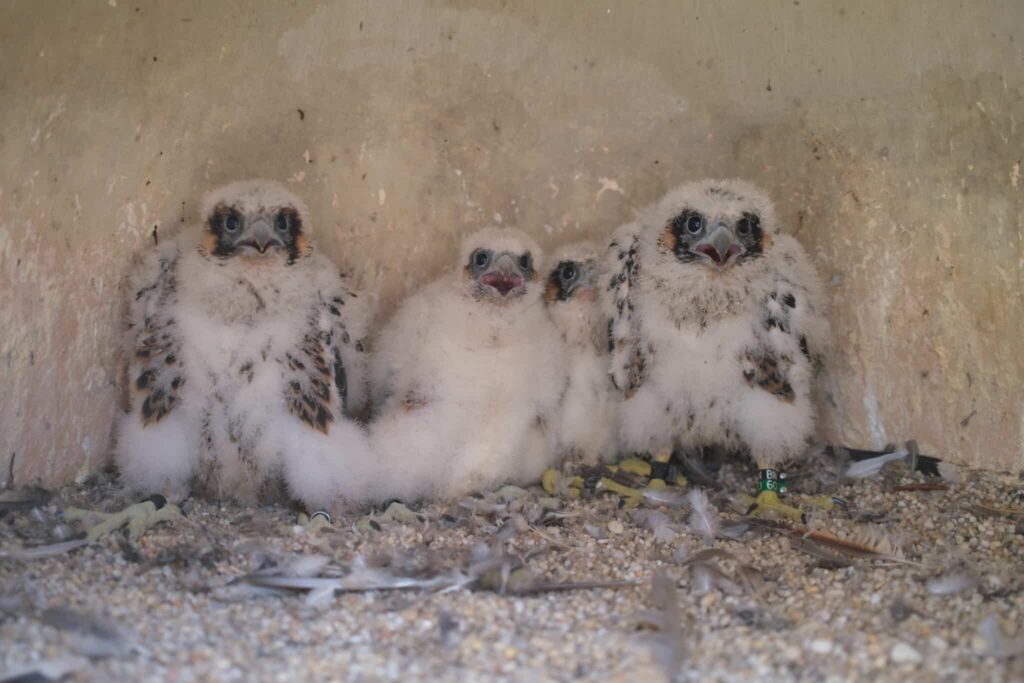It’s been a while since the last update. Since then all young have fledged. Thank you to Kathy Clark with NJDEP for the timeline of events that followed:
- 6/10 – 3 of the 4 had fledged, and BK/10 male had fledged around 6/5
- 6/12 – all 4 fledged, *probably including BN/62, the last-hatched
- 6/13 – last date any fledglings were seen on camera
There were few sightings of Frida and Mango after the young fledged.

A week later, a new *banded* female was observed by viewers. She has been observed courting with Mango. This is clearly the reason why we haven’t seen the fledglings or Frida. We have not received any reports of them being found nearby. As Kathy stated in an email, “this isn’t a good sequence of events for the fledglings.” At this point it is unclear where they have gone and if they are still alive. Since they were banded, they can be traced back to this eyrie. We can only hope that they are alive and well. As we stated in a previous post, this urban nest being productive is really crucial to maintaining the falcon population in New Jersey with coastal nests being abandoned.

About this new female. Since she is banded, we know more about her. She only has a federal band but with the camera, Kathy was able to read the band – 1947-31215. Kathy reported that “she hatched in 2016 (unknown where) and was captured at JFK Airport and transported/banded in New Paltz, NY, where she was released (8/18/16).” She has been courting with Mango since June 21.





